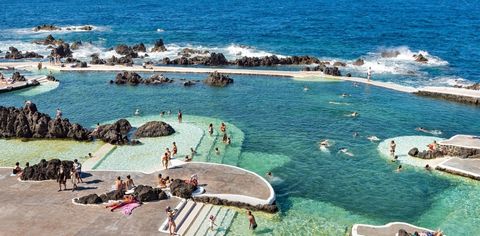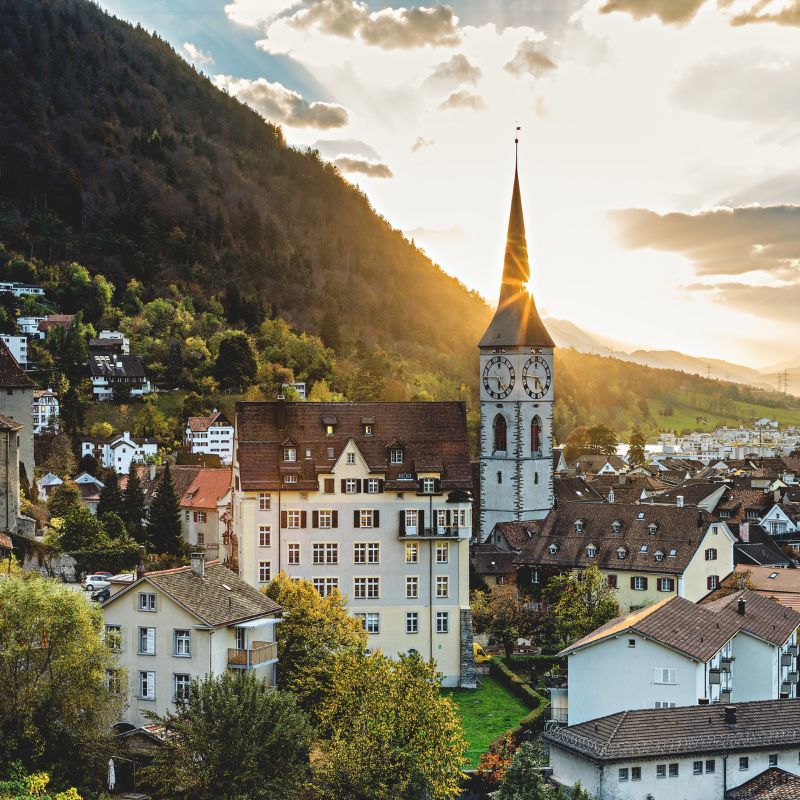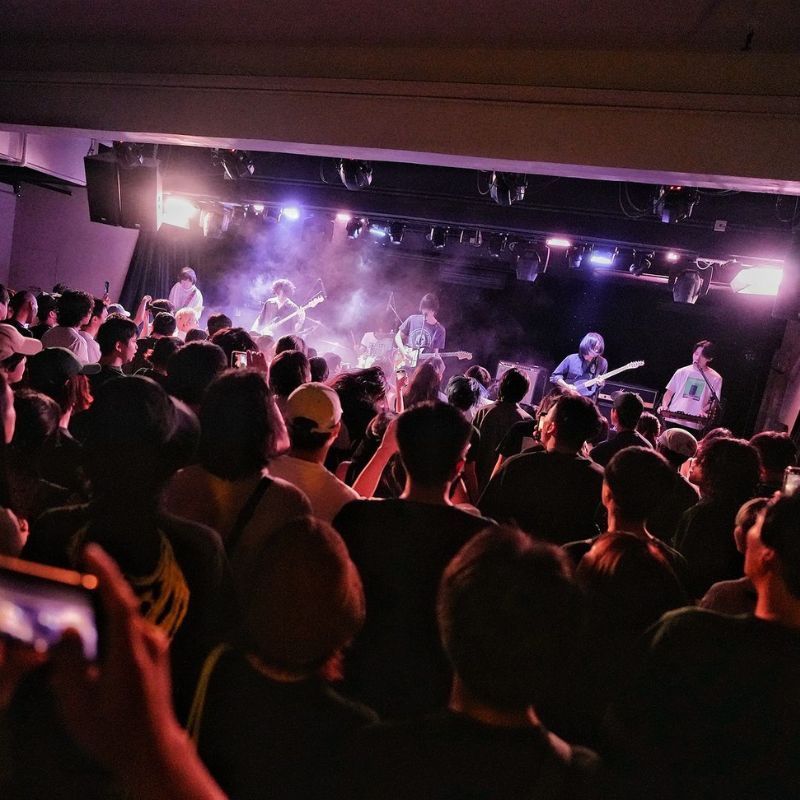
On Madeira, a lush dot of Portuguese land, the North Atlantic has shaped every aspect of life for centuries—the economy, the gastronomy, the infrastructure. Join us and explore the cliff-top eyries and beachside towns of this gift from the sea. By Nina Caplan
In 1419, when Portuguese seafarers happened on an uninhabited island in the North Atlantic, around 800 kilometres off the African coast, they were awed by the dense covering of greenery. Even today, after 600 years of human encroachment, their amazement is easy to understand. The variety of flora is astounding: groves of local mahogany, bushy stands of indigenous lily of the valley, and a laurel forest, the largest surviving relic of the vegetation that covered much of southern Europe at least 15 million years ago. Those first men who arrived on the island called it Madeira—the Portuguese word for wood.
But those 15th-century sailors were perhaps indifferent to what struck me most forcibly when I first visited this summer: the insistent presence of the ocean. Madeira—the largest island in an archipelago of the same name—is so steep that even inland, when I walked through a vineyard or dined on a hillside, bright water framed the view. In the capital city, Funchal, on the southern coast, hotels and restaurants take full advantage of a vista that never gets boring. But at ground level, strolling along sidewalks decorated with traditional cream-and-black mosaics, I was still distracted by gaps between buildings that offered shifting glints of blue. The Atlantic affects the climate, wildlife, and food. Those sailors, I thought, should have called their discovery mar—the sea.
My interest in this place pre-dates my realisation that it was a place. My father used to sing a sly English music-hall ditty, “Have some Madeira, m’dear,” so when I grew older, it was the wine I wanted to try. Still, it turns out that there is no better location than Madeira in which to drink Madeira. The wine and the place are as intertwined as their common name suggests. Every boat trip, swim, and breathtaking mountaintop walk, as I inhaled the salt and admired the azure tint of the waves, reminded me that the Atlantic has shaped this wine’s existence. And the wine, the principal export of Madeira for more than 400 years, has profoundly changed its homeland’s destiny. As our hiking guide, Otilia ‘Tilly’ Câmara, put it, “Madeira was born from the sea.”
We were high in the hills at the time: Câmara was leading us on a glorious hike along one of the levadas, the man-made irrigation channels that direct water from the forested mountains in the north and west to the dry southern slopes. It was so peaceful, walking alongside this small, orderly stream, framed by walnut, apple, and pear trees. We passed an older woman in a headscarf, who carried a pail of leaves to use as mulch, and felt terribly remote until we realised the closest village was just two minutes’ walk away.

For centuries, right up until the advent of air travel, almost everyone stopped in Madeira. Columbus briefly lived on the island. Captain Cook paused for supplies, sailed on to Rio de Janeiro and Tierra del Fuego, and wound up planting a British flag in eastern Australia. On the way to America and the West Indies, traders and explorers bought barrels of Madeira wine and discovered that it doesn’t just survive an ocean voyage, it improves. The acidity endures, and the nutty, caramel flavours deepen. In an era when wine that travelled usually arrived as vinegar, this was incredible. And Madeirans grew rich on their wine’s resilience.
At Blandy’s Wine Lodge, part of a 16th-century Franciscan monastery that takes up an entire block near the Funchal waterfront, my husband, Craig, and I walked through beamed rooms, their wood dark with age, where the wine matures in barrels so old that Blandy’s employs four in-house coopers to handle the ongoing repairs. Past a small museum and a stately row of giant wooden vats, we arrived at a tasting room. “We have nearly four million litres of Madeira wine ageing here,” explained Chris Blandy, CEO of his family’s business. He casually opened a 2002 Sercial, made from one of the five Madeira grape varieties. It wasn’t sweet, although there were toffee and stewed-apple flavours, as well as a lemony acidity. It wasn’t old either. Unlike other wines, Madeira lasts almost indefinitely. There are surviving Madeiras—rich, bittersweet, utterly drinkable—that were made around the time John Blandy arrived from England to found the winery that bears his name. And that was in 1811.
Perhaps I was sentimental, but the whole of Madeira seemed to have a versatility, a willingness to consider different ways of doing things, that might be a legacy of the inhabitants’ historic reliance on visitors. There were the venerable and modern styles of wine; hotels like Quinta da Casa Branca built in repurposed quintas, or manor houses, and ultra-contemporary resorts like Les Suites at the Cliff Bay. At Casa de Pasto das Eiras, an unprepossessing shed in the hills east of Funchal, I tried espetadas, skewers of tender beef grilled on an open fire and hung on metal hooks at each plate. This was quite the contrast with the modern dishes at Kampo, a seriously hip Funchal restaurant with an open kitchen and a poured-concrete bar. We ate sophisticated versions of Portuguese specialities such as a savoury bola de Berlim doughnut, which is usually sweet but is here filled with chorizo and mushroom and topped with powdered sugar.
From the city, we glided by cable car into the hills, above terraces of the tiny, sweet local bananas, above flights of precipitous stairs leading to whitewashed, orange-roofed houses, whose residents must have excellent thigh muscles from all that climbing. At Pátio das Babosas, an airy hilltop restaurant, we stopped for lunch—grilled local tuna with milho frito,cubes of cornmeal fried with herbs; lapas, chewy, tasty limpets served in their frill-edged shells with butter, garlic, and a cascade of lemon—and gazed out over the slopes. It was distinctly cooler up there—clouds cluster around these mountains, then condense into rain that is channelled elsewhere via the levadas.

It was in these hills that the rich built their summer homes. One such residence is Monte Palace Madeira, an imposing estate constructed for an 18th-century consul and now home to over 7,50,000 square feet of botanical gardens filled with native and imported plants. Gorgeously decorated Portuguese tiles, some 500 years old, seem to be pasted, rather disconcertingly, to the foliage. We skittered down paths lined with tangled greenery and giant ferns; what looked like fat, half-buried palm trees were actually cycads, the world’s most ancient seed-plant family, which first appears in the fossil record around 280 million years ago. In front of that grand building, a stepped cascade drew the eye down to a fish-filled lake and on to the distant ocean.

A cable car seemed like a luxury when it came time to descend to the sunny lowlands by way of an only-in-Madeira sledge car. Two men wearing straw boaters and thick-soled shoes ushered Craig and me into an upholstered wicker basket. Why the thick soles? I wondered, as each attendant grabbed a rope attached to our conveyance and ran ahead down a sharply sloping road that had been worn glass-smooth from previous journeys. As we picked up speed, the two jumped on the back like old-fashioned footmen, and I got my answer: those shoes were our only brakes.
There was no dedicated path: cars had to stop for us, but there were few. The basket—originally used to transport goods downhill—swivelled this way and that, breath-catchingly close to the roadside ditch. It was as exhilarating as a fairground ride, and a lot more immediate. I don’t mind admitting that I hollered.
Recovery was swift. We padded through the beautiful grounds of our hotel, Quinta da Casa Branca. The gardens were amazing: Australian macadamia trees, cinnamon trees from Sri Lanka with their perfumed bark, the purple blossoms of the wonderfully named silver-leafed princess flower. On the broad stone terrace, as the setting sun briefly grazed the mountaintops, we sat down to herb-crusted lamb with local couscous. We sipped not the famous, fortified Madeiran wine but a deep-pink rosé, made from Tinta Negra Mole and Aragonez grapes, which, as we would see first-hand the following day at winery Quinta do Barbusano, grow on abrupt hills overlooked by a lonely belfry—a church with no church—and cooled by the ever-present sea.

The island was startlingly lovely: so green and sheer it resembled a vertical garden, trees alternating with terraces of bananas or vines. As we drove around the island, the sun would shut off every so often as the car ducked into a tunnel. “We are like a Swiss cheese, full of holes!” our driver said cheerily. The sky varied from cerulean to deep gray, depending on where we were, but the steep inclines and bright-purple African lilies that lined the roads like cheering crowds ensured that, even when it was cloudy, the scenery was never dull. One morning, atop Pico do Arieiro, the island’s third-highest peak, we watched the sun break through a glowing white haze just below us. The early start and short, cold walk in the dark, draped in blankets and clutching a thermos of coffee, were more than worth it to have the mountain seemingly to ourselves.
How those tunnels through the hills, built around 30 years ago, transformed the island! Journeys that would once have taken forever are now swift: little more than an hour to cross nearly the whole of Madeira’s 56-kilometre length, from eastern Machico to tiny Paúl do Mar in the west, where you can sometimes see the legendary green flash, a rare ray of emerald that appears on the horizon just before the sun sets.
Though travel time was minimal, those short commutes gave us a crucial window to sightsee and revive our appetites between meals. Which was vital when lunch at the hilltop Quinta do Barbusano was espetadas prepared by owner Tito Brazão and dinner was multiple courses at Galáxia Skyfood on the 16th floor of the Savoy Palace, a gleaming hotel that opened in 2019. The food played skilfully with Madeiran tradition. The panelo, a traditional banquet of stewed pork and sweet potatoes, had been reinvented as a taco; dessert was a banana poached in rum and accessorised, cheekily, with a communion wafer.
In the interim, we walked Funchal—past Mercado dos Lavradores, a buzzing Art Deco his forearm jumping in rhythm as he thumped and twirled the mexilhote, or wooden baton. His measures would have quenched the thirst of a desert wanderer, if this had been water—which, at 100 proof, it certainly wasn’t. The taste was dangerously pleasant. “We drink this in winter when we have a cold,” my guide, Célia Mendonça, said. Certainly honey and lemon is a universal remedy, but I wondered whether this potion cured sufferers or finished them off entirely.

Drinks in hand, we edged out the back door into dazzling sunshine. Patrons of neighbouring bars relaxed at tables, and fishing boats bobbed in front of us. No wonder that when Winston Churchill visited the island, he went there to paint. He stayed at Reid’s Palace, an enormous pink hotel on a cliff, designed with its most magnificent side facing the sea. Now managed by Belmond, the property was built in 1891 to bedazzle the wealthy foreigners who, until the 1960s, all arrived by ship—and were then carried to the hotel in hammocks. This service has long since been discontinued, but Reid’s, with its grand pianos and chandeliers, its cream tea on the elegant checkered balcony looking out through lush tropical gardens toward the water, is still a bastion of historic gentility. Churchill must surely have felt at home; George Bernard Shaw, being Irish, possibly less so, although he did take tango lessons. (‘Shaw Admits Learning the Tango at Madeira, but Has Neither Time nor Youth for It Now’ ran a New York Times headline in 1926.)


We took a look at the other end of the rum-making process, too, at Engenhos do Norte, the only producer still using steam power to press and distill the sugarcane, in a vast shed full of copper containers and 19th-century machinery. The metal was all painted bright blue, the same colour as the dye used to mark the patterns on the material in another traditional island industry, embroidery. Perhaps it was a coincidence. Or perhaps, Madeirans working indoors, whether on gargantuan machines or on delicate stitching in the Bordal embroidery workshop, crave a reminder that the sea is just outside.
“Hello, gorgeous!”whispered Margarida Sousa, as the first dolphin glided alongside our motorboat. We had already marvelled at a glossy dark arc that Sousa, who studied marine biology, informed us was the back of a Bryde’s whale, probably around 12 metres long. Tracking the animals is forbidden, so two people on separate cliffs scanned the water and called to inform the skipper where to head. “If the phone rings a lot, it’s a good sign!” she explained. The phone rang a lot. When the dolphins flanked us, we slid into the water, dangling from ropes to minimise splashing. I dipped my head into a quiet turquoise world where the beaked inhabitants seemed to smile encouragingly, their eyes outlined in black, Cleopatra-style. A mother nuzzled her baby; their playmates, black and white with a patch of yellow, dipped, and rose. We wore masks but no snorkels, and I was so absorbed that remembering to breathe became a nuisance.
After reluctantly returning to shore, we spent the afternoon at Fajã dos Padres, an organic farm with a simple waterside restaurant below the towering Cabo Girão. We took comfort in a lovely lunch—black scabbard fish, a local speciality; lapas harvested on the rocks outside; and vegetables from owner Catarina Vilhena Correia’s garden. We had already tried one highly unusual product of this place: a deliciously citrusy 1993 Frasqueira, a single-vintage Madeira that must have been aged for at least 20 years. This version was made from an ancient variety of the Malvasia grape, thought lost until a vine was spotted on Correia’s property.


The next day we drove to Porto Moniz, on the island’s northwestern tip, where torrents of seawater poured thrillingly into pools hollowed out of the black volcanic rock. The water was cool but the view spectacular, cliffs rearing on each side, moss spilling over them like lava flow—and, of course, the ocean just beyond. It flows through all my memories of this trip, from the walks to the extraordinary wine that wouldn’t exist without it. That wine was all I took home with me, which at least means that, anytime I like, I can pour a glass of chilled Madeira, a drink as fond of travel as I am and even more shaped by it, and briefly be transported, via those distinctive flavours, back to that sunny island and its sustaining sea.
Getting There
Multiple airlines serve one-stop flights from Delhi, Mumbai, Chennai, Bengaluru, and Hyderabad to Madeira. Cristiano Ronaldo International Airport, commonly known as Madeira Airport, located in Santa Cruz, is the main gateway to the archipelago.
Stay
This sleek newcomer has 23 ocean-facing suites. Suites from INR 39,750
A garden oasis in the heart of Funchal. Doubles from INR 16,150
Reid’s Palace, a Belmond Hotel
This cliff-top icon from the 19th century dazzles in pink. Doubles from INR 30,600
Eat & Drink
Grab a glass of poncha at Câmara de Lobos’s most charming drinking den.
A humble joint near Funchal with classic dishes and unbeatable views. Entrées INR 442–INR 885
This organic farm in Quinta Grande has excellent local food and wine. Entrées INR 959–INR 3,465
At this restaurant in the Savoy Palace Hotel, disco-lite decor belies a sophisticated menu. Entrées INR 1,401–INR 3,613
Find surprising, seasonal fare at Madeira’s most innovative restaurant. Entrées INR 1,180–INR 4,055
Pátio das Babosas
Visit this mountainside spot for stellar seafood and views of Funchal. Entrées INR 590–INR 1769, 16 Largo das Babosas; 351-291-143-530
Do
On the Funchal waterfront, Blandy’s is one of the isle’s most storied Madeira houses.
This Funchal factory’s intricate embroidery, a Madeira tradition, is not to be missed.
This rum distillery is the last vestige of Madeira’s once-dominant sugarcane industry.
Lush gardens reachable via a scenic cable car.
Try the Aragonez at this winery on the northern coast.
Related: Among The Beaches, Portugal’s Wine Region Shines










